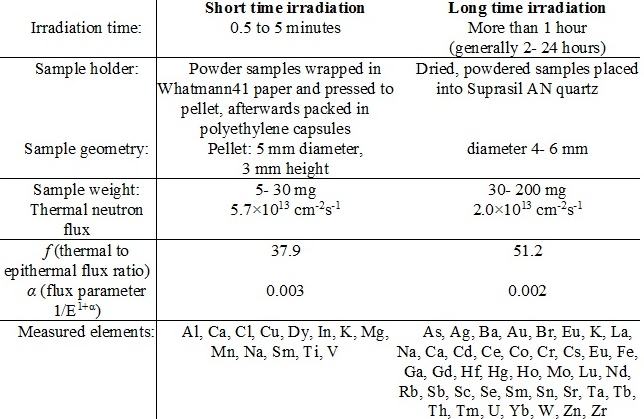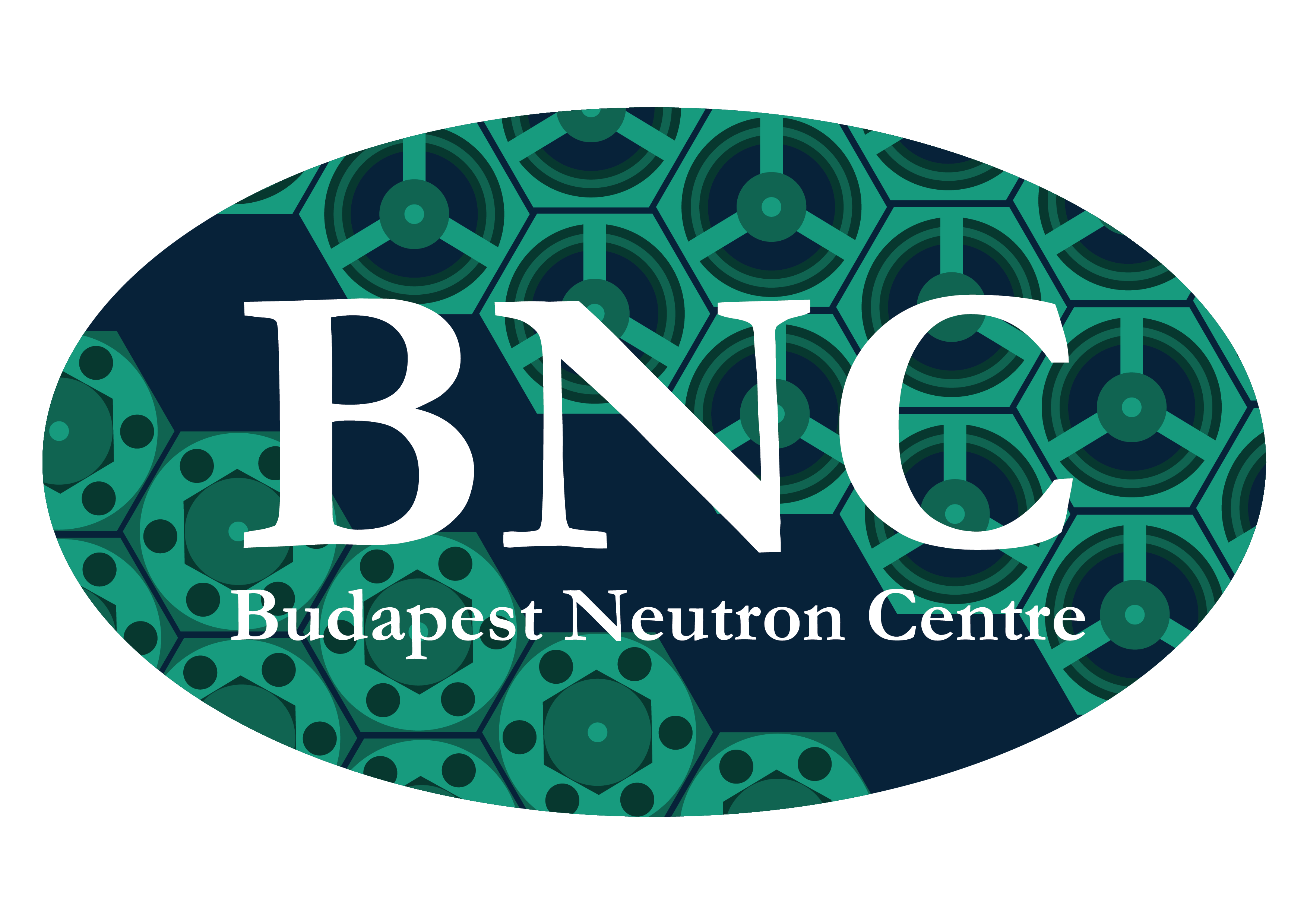NAA
NAA – Instrumental Neutron Activation Analysis
Instrument responsible: Katalin Gméling
Contact: naa@bnc.hu
Neutron activation analysis (NAA) is a method for quantitative composition analysis of chemical elements based on converting the stable nuclei of the sample to radioactive nuclei by nuclear reactions, followed by the quantitation of the reaction products via their gamma radiations. The k0-standardized neutron activation analysis (k0-NAA), combined with high-resolution and high-throughput gamma-ray spectrometry, offers mostly non-destructive, multi-elemental analysis for many branches of science and technology. NAA has inherently favorable characteristics, negligible matrix effect, excellent selectivity, and high sensitivity. Even small amounts (a few tens of milligrams) of (mostly solid) samples can be measured, in which about 35-75 elements in less than 0.01 μg quantities can be determined.
Figure 1. sample preparation tools and flux monitor foils
Samples for NAA are irradiated with neutrons in the core of the reactor. Both short and long-time irradiations are possible in two designated vertical channels of the Budapest research reactor. Short irradiations are performed by means of a pneumatic rabbit system, whereas samples for long irradiations are loaded into the rotating channel.
The gamma rays emitted from the sample are counted in low-level gamma-spectroscopic counting chambers to reduce the external background. In the NAA laboratory of BNC there are three low-level gamma-spectroscopic chambers, which are built from pre-World War II steel (to be free from any man-made radioactivity), have 10 cm thick walls covered with a 2 mm thick Cu-layer from inside to attenuate the X-rays. Three high-purity Ge detectors and two digital gamma spectrometers are installed to detect and collect the gamma spectra.

Table 1. Technical details of the irradiation
|
Detectors |
Efficiency |
Resolution @ 59.5 keV |
Resolution @ 1332.5 keV |
Dewar |
|
ORTEC PopTop 55195-P "D5" |
55% |
0.95 keV |
1.75 keV |
30 l |
|
Canberra GC3618 "D4" |
36% |
0.80 keV |
1.80 keV |
30 l |
|
Canberra GC1318 "D3" |
13% |
0.95 keV |
1.80 keV |
30 l |
| Counting station |
Spectrometers |
Software (energy range) |
Features |
| D3 |
ORTEC DSPEC Plus |
MAESTRO (30-2500 keV) |
DSP-based, Zero-Deadtime Mode |
| D4 and D5 |
ORTEC DSPEC 502 |
MAESTRO (30-3300 keV) |
DSP-based, Two channels, Zero-Dead Time Mode |
Tables 2 & 3. Technical details of the gamma detectors and spectrometers
The spectra are evaluated using the gamma spectroscopy package Hyperlab 2013.1. Calculations include automatic peak search, energy calibration the nonlinearity option, net peak area computation, and efficiency correction. For quantitative evaluation, the KayZero for Windows 3 program is used, based on the k0 standardization.
Figure 2. The pre-World War II iron gamma counting stations of the NAA laboratory
Reference: László Szentmiklósi, Dénes Párkányi, Ibolya Sziklai-László, Upgrade of the Budapest neutron activation analysis laboratory, J. Radioanal. Nucl. Chem. (2016) 309 91–99 DOI: 10.1007/s10967-016-4776-7
